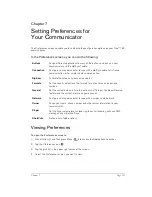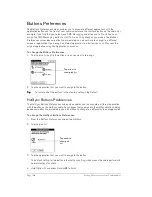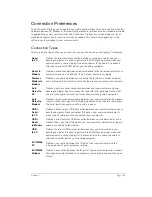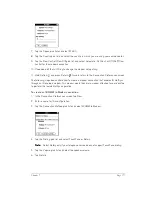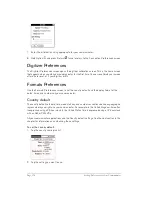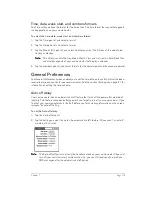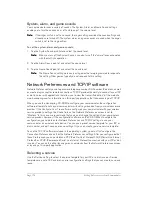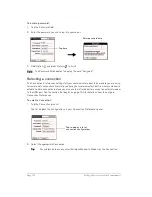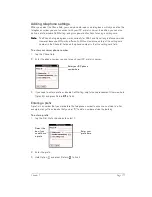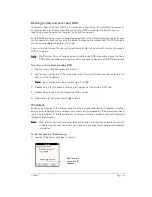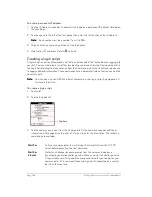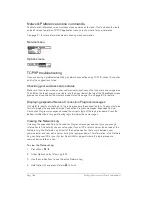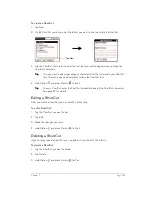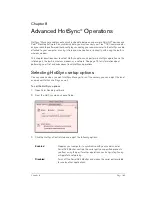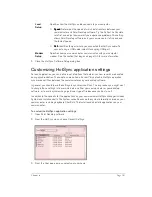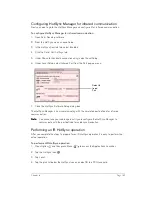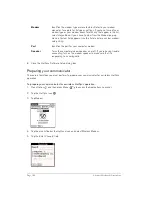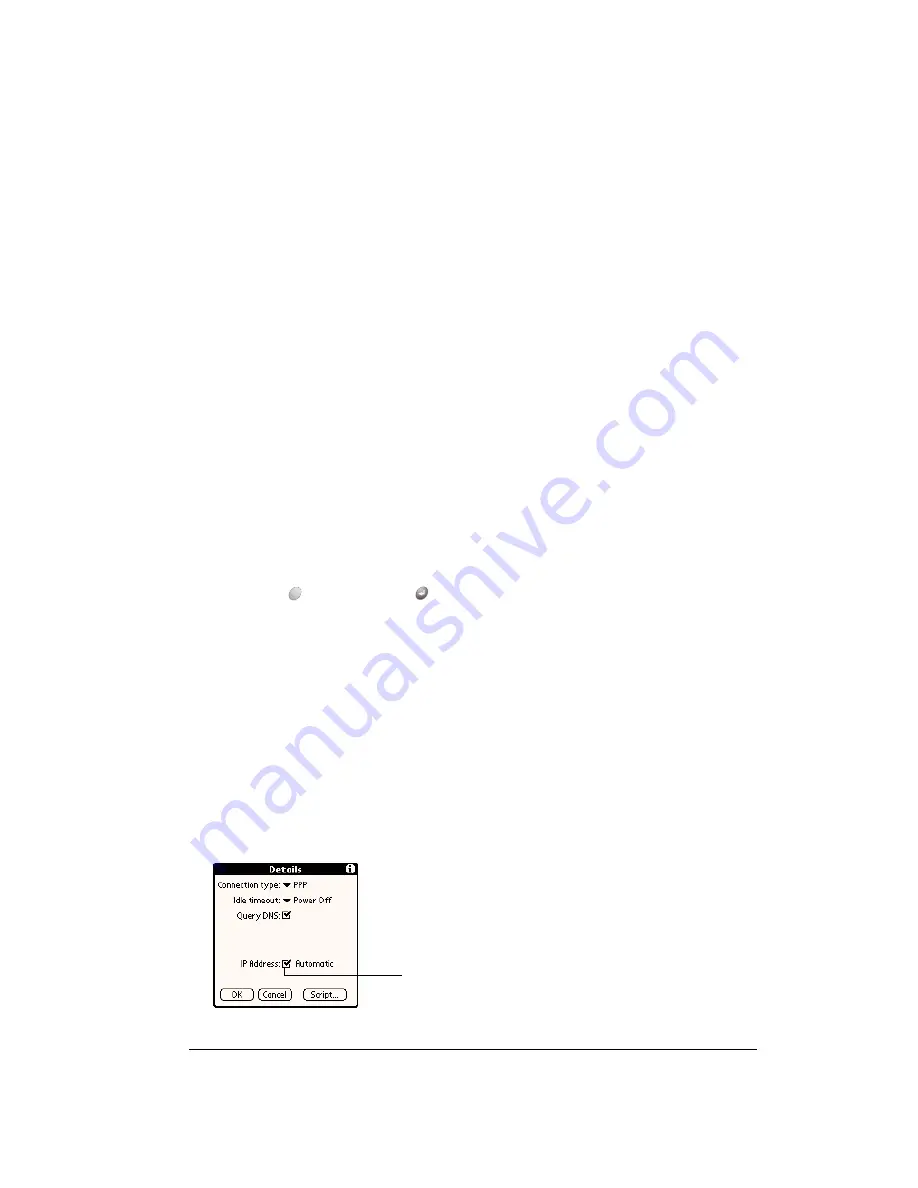
Chapter 7
Page 181
Defining primary and secondary DNS
The Domain Naming System (DNS) is a mechanism in the Internet for translating the names of
host computers into IP addresses. When you enter a DNS number (or IP address), you are
identifying a specific server that handles the translation services.
Each IP address has four sections, separated by periods. In the Details dialog box, you enter each
section separately. Each section of an IP address is made up of a number from 0 to 255; numbers
are the only allowable characters in this field.
Ask your Internet Service Provider or System Administrator for the correct Primary or Secondary
DNS IP numbers.
N
N
N
No
o
o
otttte
e
e
e::::
Most Internet Service Providers automatically provide DNS information. Leave the Query
DNS option checked unless you are certain you need to manually enter DNS information.
To enter a primary and secondary DNS:
1. Tap the Query DNS check box to deselect it.
2. Tap the space to the left of the first period in the Primary DNS field, and then enter the first
section of the IP address.
N
N
N
No
o
o
otttte
e
e
e::::
Each section must be a number from 0 to 255.
3. Repeat step 2 for the second, third, and last sections of the Primary DNS field.
4. Repeat steps 2 and 3 for the Secondary DNS number.
5. Hold Option
and press Return
to finish.
IP address
Everyone who logs on to the Internet needs to have a unique identifier (an IP address), whether
permanent or temporary. Some networks dynamically assign a temporary IP address when clients
log in. The IP Address field lets you identify whether your network provides automatic (dynamic)
temporary IP addressing.
N
N
N
No
o
o
otttte
e
e
e::::
Most Internet Service Providers automatically assign IP addresses. Leave the Automatic
IP Address option checked unless you are certain you need to manually enter IP address
information.
To identify dynamic IP addressing:
■
Tap the IP Address check box to select it.
Tap to select
automatic IP
address
Summary of Contents for Treo 180
Page 1: ...Treo 180 Communicator User Guide Macintosh Edition...
Page 10: ...Page 10 Contents...
Page 36: ...Page 36 Entering Data in Your Communicator...
Page 78: ...Page 78 Common Tasks...
Page 166: ...Page 166 Application Specific Tasks...
Page 188: ...Page 188 Setting Preferences for Your Communicator...
Page 200: ...Page 200 Advanced HotSync Operations...
Page 216: ...Page 216 Troubleshooting Tips...
Page 218: ...Page 218 Non ASCII Characters for Login Scripts...

